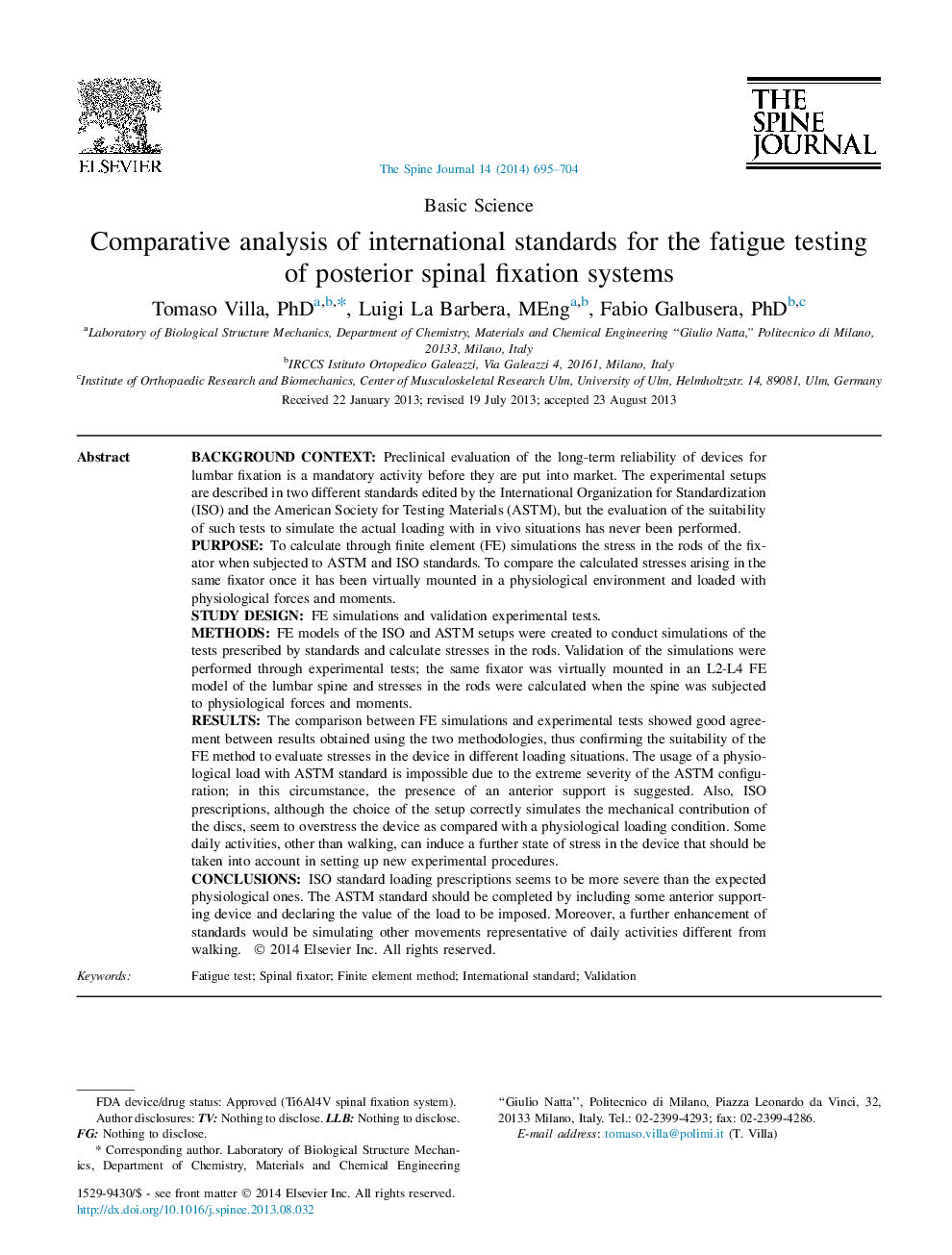| کد مقاله | کد نشریه | سال انتشار | مقاله انگلیسی | نسخه تمام متن |
|---|---|---|---|---|
| 4097028 | 1268578 | 2014 | 10 صفحه PDF | دانلود رایگان |
Background contextPreclinical evaluation of the long-term reliability of devices for lumbar fixation is a mandatory activity before they are put into market. The experimental setups are described in two different standards edited by the International Organization for Standardization (ISO) and the American Society for Testing Materials (ASTM), but the evaluation of the suitability of such tests to simulate the actual loading with in vivo situations has never been performed.PurposeTo calculate through finite element (FE) simulations the stress in the rods of the fixator when subjected to ASTM and ISO standards. To compare the calculated stresses arising in the same fixator once it has been virtually mounted in a physiological environment and loaded with physiological forces and moments.Study designFE simulations and validation experimental tests.MethodsFE models of the ISO and ASTM setups were created to conduct simulations of the tests prescribed by standards and calculate stresses in the rods. Validation of the simulations were performed through experimental tests; the same fixator was virtually mounted in an L2-L4 FE model of the lumbar spine and stresses in the rods were calculated when the spine was subjected to physiological forces and moments.ResultsThe comparison between FE simulations and experimental tests showed good agreement between results obtained using the two methodologies, thus confirming the suitability of the FE method to evaluate stresses in the device in different loading situations. The usage of a physiological load with ASTM standard is impossible due to the extreme severity of the ASTM configuration; in this circumstance, the presence of an anterior support is suggested. Also, ISO prescriptions, although the choice of the setup correctly simulates the mechanical contribution of the discs, seem to overstress the device as compared with a physiological loading condition. Some daily activities, other than walking, can induce a further state of stress in the device that should be taken into account in setting up new experimental procedures.ConclusionsISO standard loading prescriptions seems to be more severe than the expected physiological ones. The ASTM standard should be completed by including some anterior supporting device and declaring the value of the load to be imposed. Moreover, a further enhancement of standards would be simulating other movements representative of daily activities different from walking.
Journal: The Spine Journal - Volume 14, Issue 4, 1 April 2014, Pages 695–704
